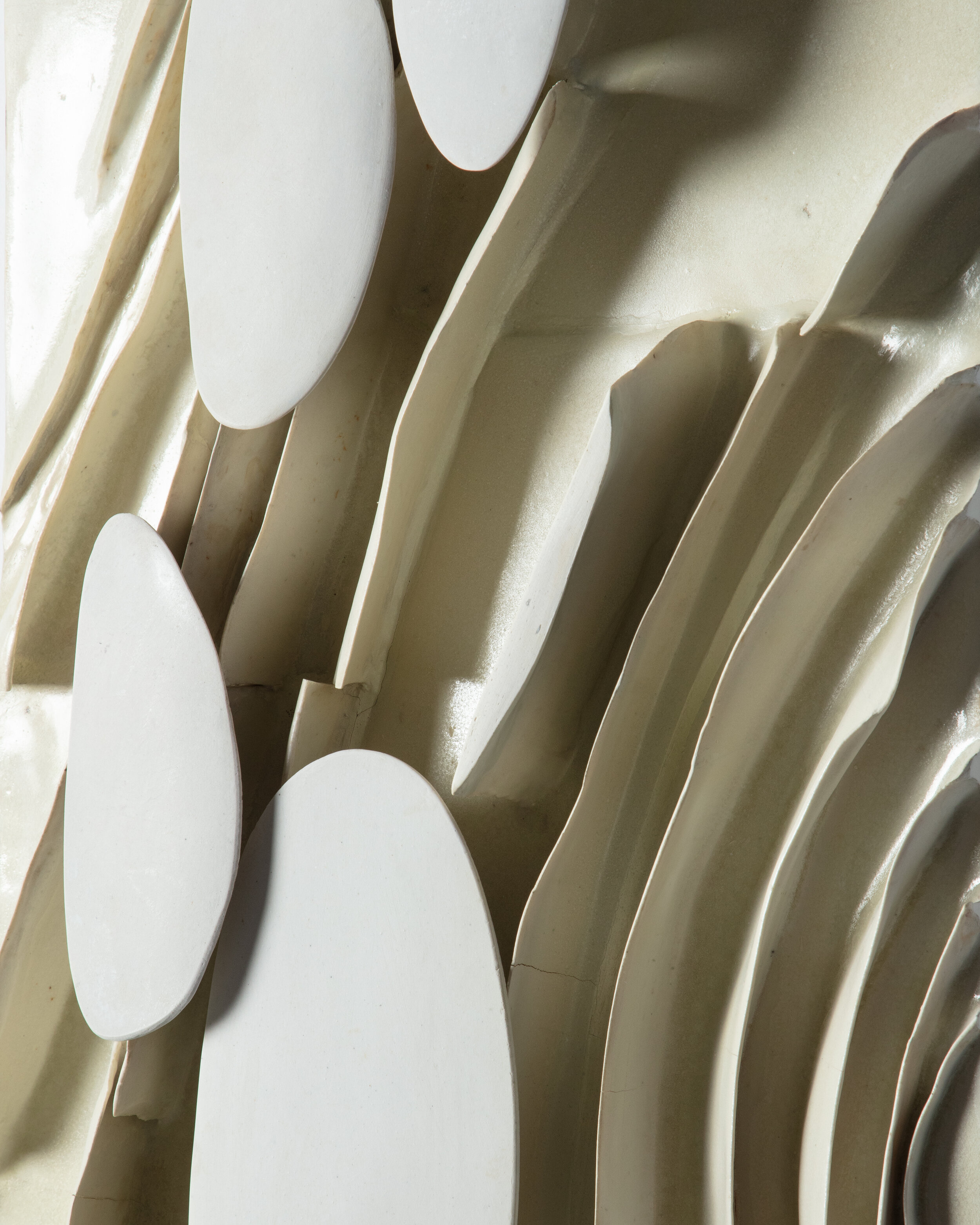
Ruth Duckworth
Courtesy of Ruth Duckworth Estate and Thea Burger.
The life of Ruth Duckworth, like so many of her generation, was shaped by the experiences of war and migration. She was born in 1919 in Germany, but as the child of a Jewish father, was forced to leave when the Nazis came to power. She arrived in London in 1936 and studied sculpture there, not gravitating to ceramics until after the war, when, reportedly at the suggestion of Lucie Rie, she pursued training in the discipline at the Central School of Arts and Crafts. Soon she was, with Rie (who was Austrian) and Hans Coper (a fellow German), one of a triumvirate of expatriates who introduced progressive tendencies in ceramics to Britain. In 1964 she moved again, this time to Chicago, to take up a teaching position.
By this time, she had shifted away from her early interest in tableware and was developing pot forms with deep fissures, added ribs, or spirals—flashes of figuration and suggestions of landforms. In America, she went on to pursue a wide range of formats, but turned her attention increasingly to wall reliefs with a complex rhythm of planarity, curvature, and light and shadow. These exemplify the combination of rigor and improvisation that she sought: “It takes years of training,” she once said, “to improve one’s playing.”¹
Untitled wall mural in porcelain. Designed and made by Ruth Duckworth, USA, c. 1970.
17.5” L x 5.5” W x 33.75” H
44.5cm L x 14cm W 85.7cm H
SP1301
Courtesy of Thea Burger, the Estate of Ruth Duckworth, and Salon 94



